What are the key factors shaping AI cost?

-
The type of software you’re eyeing to build. Artificial intelligence is an umbrella term that refers to any device or application that makes decisions based on the information it consumes, mimicking human intelligence. Voice assistants that understand questions uttered in natural language, security cameras that recognize people in live video footage, and expert systems that spot cancerous tumors in CT scans can all be described as artificial intelligence. However, their complexity, performance requirements, and, subsequently, implementation costs vary greatly.
-
The level of intelligence you’re aiming for. People often associate AI with Boston Dynamics robots and holographic avatars from Blade Runner 2049. In reality, most business AI solutions can be described as narrow artificial intelligence, meaning they’re only programmed to perform a particular task—for example, recognize text in PDF files and convert them into editable documents. To be classified as truly intelligent, AI algorithms should be able to uncover patterns in data with little to no human intervention, assess the probability or improbability of an event, justify their assumptions, continuously process new data, and learn from it. That’s what modern AI agents do—but their performance may deteriorate outside of controlled environments.
-
The amount & quality of data you’re going to feed your system. Artificial intelligence is only as good as the data it was trained on, and the more data algorithms consume, the better they become.
The availability of pre-trained AI application development tools, such as large language models, greatly simplifies the training process. Some commercially available solutions, such as ChatGPT or DALL·E 3, can even be used directly without further customization. Still, the best results can be obtained by fine-tuning algorithms on data that is unique to your company. This data can be structured, meaning it is properly organized and stored in relational database management systems (RDBMs), or unstructured, such as emails, images, and videos, which are typically bulk-uploaded to data lakes. As far as AI cost is concerned, it is cheaper to work with structured data, especially if there is a substantial quantity of information to boost your algorithms’ accuracy. With unstructured data, AI experts have to go the extra mile to organize and label it, while software engineers need to set up the complete infrastructure ensuring continuous data flow between the components of your system. In some cases, such as training AI-powered medical imaging solutions, data can be hard to obtain due to privacy or security reasons. To overcome this hurdle, AI engineers may artificially expand the size of a limited dataset, reuse existing classification algorithms, or produce synthetic data for model training using generative AI solutions. It is also recommended that you seek data platform consulting services before integrating AI capabilities into technology systems. Professional services like these are bound to drive up the cost of building an AI program.
-
The algorithm accuracy you’re hoping to achieve. The accuracy of your AI solution and its predictions depends directly on the type of application and the requirements you impose on it. A customer support chatbot, for example, is only expected to handle up to 60% of routine user queries; for complex issues, there’s always a human specialist waiting on the other end of the line. A pilotless delivery drone that transports blood and human organs, on the other hand, should be able to maneuver around objects with immaculate precision, relying on advanced computer vision algorithms. Higher accuracy and reliability of artificial intelligence predictions directly affect your project’s lifespan and increase AI development cost. Furthermore, AI algorithms will continue to absorb new data as they collaborate with human specialists, which may result in additional training and maintenance expenses.
-
The complexity of an AI solution you’re working on. Artificial intelligence is the brain of a technology system that pushes data in and out of your business app and presents insights to users, including those who don’t have a technical background. When discussing the cost of artificial intelligence, we should consider the cost of developing actual software. This includes a cloud-based back end, ETL/streaming tools, APIs for internal and external application integration, and some type of user interface, such as a cloud dashboard, mobile app, or voice assistant.
Lightweight AI, like the customer support chatbots mentioned in the previous section, may live inside a corporate messenger and does not require a complex infrastructure to function. AI-powered data ecosystems providing a 360-degree view into your company’s operations are a whole different story.
Additional AI implementation challenges will arise when you start scaling your intelligent system from one or several use cases (think predicting customer churn rate or analyzing sales data in a particular brick-and-mortar store) to a company-wide deployment. In fact, that’s the reason why only 53% of enterprise AI projects make it from prototypes to production.
Speaking of failures, only a tiny fraction of AI projects (Gartner believes it’s 20%; VentureBeat is even less optimistic) eventually deliver on their promise.
Why do AI projects fail?
This topic deserves a separate article 😀. In general, AI initiatives fail due to a lack of collaboration between data scientists and software engineers, limited or low-quality training data, and the absence of a company-wide data strategy—as well as a compelling artificial intelligence strategy that extends beyond selecting use cases and tools.
Furthermore, most failed AI projects are described as “moonshots”—overly ambitious endeavors led by starry-eyed data scientists and CIOs hoping to “completely change the way our company has been operating for decades.” Such projects can take forever to complete, and it’s only natural that a company’s C-suite will eventually stop pouring money into the bottomless pit without seeing any real value.
How much does AI cost? These examples from the ITRex portfolio might give you a hint
Project 1: AI-powered telemedicine solution
A healthcare technology company approached ITRex to upgrade a telehealth system, which is implemented in multiple hospitals across the USA, with video recording capabilities.
The new version of the system would allow healthcare providers to apply facial recognition and natural language processing technologies to analyze videos filmed during consultations and potentially improve doctor-patient interactions.

During the discovery phase, we ruled out possible technology barriers and selected the optimum tools for the project—primarily Python and the accompanying frameworks and SDKs for speech recognition and analysis. For the pilot version of the telemedicine system, the client chose the speech-to-text functionality only, with no user-facing components expected to ship. The solution conducts linguistic analysis of video recordings to detect possible changes in the communication style that could shed light on patients’ well-being and help physicians come up with better treatment plans.
A basic version of a video/speech analysis AI platform may cost $36,000-56,000.
Project 2: An intelligent recommendation engine
A technopreneur was looking to add AI capabilities to a B2C platform connecting users with local service providers. Our client’s idea revolved around replacing cumbersome search filters with advanced machine learning algorithms that would analyze input text and come up with a list of service providers that match a user’s query.

We selected Amazon Personalize as the primary technology stack for the AI part of the project. In addition to providing personalized recommendations based on user inquiries, the recommendation engine comes along with a fully managed cloud infrastructure for training, deploying, and hosting ML models. The system’s back end would be written in Python, while user data would be securely stored in the cloud (Amazon S3).
The development, testing, and deployment of a similar artificial intelligence platform (MVP) would cost you anything between $20,000 and $35,000.
Project 3: An AI-driven art generator
A renowned visual artist turned to ITRex to create a generative AI solution that would produce new paintings based on his works and the works of other authors who inspire him. The client was looking to build a minimum viable product (MVP) version of the system over the course of several weeks to present it at an exhibition.

The ITRex team proposed creating a neural network based on Python frameworks (PyTorch, TensorFlow) that would process abstract paintings, learn the artist’s trademark style, generate similar pictures, and display them on the artist’s official website. For the MVP version, we recommended using an Instagram-like 1000 x 1000 image resolution and deploying the AI solution locally, with the option to migrate the system to the cloud in the future.
Depending on the type of training data (e.g., abstract vs. figurative art), image resolution (HD vs. low-resolution output images), and deployment approach, the cost of building an MVP version of an artificial intelligence system like this could reach $19,000-34,000.
Check out our AI eBook for more artificial intelligence cost estimates and expert advice on how to use the technology in business—no email or sign-up required!
Also, if your company is considering developing a generative AI solution, explore our guide on Gen AI costs and the Gen AI eBook for business leaders. The materials discuss key approaches to generative AI implementation, such as using commercially available tools without modification and retraining open-source models. Furthermore, we recommend that you read our blog posts on machine learning costs and the cost of implementing artificial intelligence in healthcare.
How to reduce AI costs — and start benefiting from artificial intelligence ASAP
According to a recent Forbes Technology Council article, developing and deploying an AI solution will ultimately cost your company 15 times more than you anticipated—unless you already have an efficiently built data ecosystem in place.
Larger AI development costs typically stem from significant infrastructure optimization, data integration, security, and artificial intelligence management and control efforts. However, you can minimize these expenses by thoroughly planning your project and starting small while having a bigger picture in the corner of your mind. You can also use pre-trained foundation AI models to speed up your project or to experiment with artificial intelligence.
To help you build an artificial intelligence system at a lower cost and start reaping its benefits from day one, the ITRex team prepared a high-level AI development and implementation guide. Its general idea revolves around taking an agile approach, as it might be hard to elicit all the requirements for a custom AI solution or come up with a realistic artificial intelligence cost estimation at the beginning of your journey. Another advantage of this approach is that you start seeing a sizable ROI early on; this, in turn, helps get buy-in from your company’s C-suite and secure further funding.
Here’s how you should handle your pilot project:
-
Collect stakeholder feedback. Before you begin developing an AI system, we recommend that you consult with internal and external stakeholders to identify the key processes and decision flows that can be supplemented or automated with AI.
-
Identify priority use cases. In this step, you should use a product prioritization framework (e.g., MoSCoW, RICE, or Kano) to select business cases that will drive the most value during the interim period and serve as a basis for further AI implementations.
-
Select the optimum technology stack. To build a vendor-agnostic solution and reduce overall AI development costs, use a combination of custom-made, open-source, and off-the-shelf components (for example, plug-and-play facial recognition engines, API-driven voice assistants, and cloud-based services supporting the creation and training of AI algorithms). Special attention should be paid to UI/UX design: your future AI system should incorporate a user-friendly interface that enables stakeholders to ask artificial intelligence questions, get instant insights, or automate tasks without seeking assistance from your IT department
-
Prepare data subject to AI-driven analysis. To help algorithms make sense of your business data, it is essential to gather information, assess its quantity and quality, and bring it into a unified format. For this, several data collection, preparation, and normalization techniques can be applied. You can learn more about this in our blog post on data preparation for machine learning. Remember that identifying the right data and thoroughly preparing it for model training is critical to reducing the cost of artificial intelligence while developing a system that produces consistent results.
-
Create an MVP version of your AI system. Building a minimum viable product supporting the essential use cases is one of AI development best practices. With an MVP at your hands, you’ll be able to check the feasibility of your concept, pinpoint areas for algorithm improvement, and start scaling the system across different use cases and departments. You should not confuse an MVP with an AI proof of concept (PoC) though; the latter serves as a validation of your idea and is meant for internal use only. However, it’s often advisable to begin your AI journey with a proof of concept to test the feasibility of your idea and eliminate technology barriers early on.
-
Treat AI implementation as a work in progress. Once you put artificial intelligence to work, you may not get perfect results right from the onset; as your AI system consumes new information under the supervision of human specialists, it will deliver more accurate predictions and become more autonomous. It is therefore important to continue gathering feedback from your company’s stakeholders, making the necessary changes to the system, and repeating the steps enumerated above when introducing new features and use cases. This will not only allow you to optimize the AI development cost but also help solve the artificial intelligence scalability problem.

In the end, how much does artificial intelligence cost?
Although it’s hard to estimate the cost of creating and implementing an artificial intelligence application without diving into your project’s details, you may easily spend $50,000 on a very basic version of the custom system you’re looking to build. But you can still get the ball rolling on a smaller budget, especially if you’re eyeing a PoC or thinking of using pre-trained ML models or plug-and-play services.
Is the game worth the candle?
By 2030, artificial intelligence could contribute up to $15.7 trillion to the global economy, with increased productivity and automation driving the lion’s share of this sum.
Currently, the AI revolution is still in its early stages. While some countries, industries, and companies might be better prepared for the disruption (meaning they do have the necessary data and IT infrastructure in place to create and deploy custom AI solutions at scale), the competitive advantage is elusive since there is an opportunity for every business to transform the way they work and lead the AI race. And your company is no exception.
FAQs
-
How do I align AI initiatives with my company’s overall business strategy?
Many businesses struggle to integrate AI into their overall corporate goals. To avoid fragmented or ineffective efforts, you should clearly define measurable objectives and KPIs that link AI projects directly to business outcomes.
-
What organizational changes are needed to support AI adoption?
AI adoption frequently necessitates changes in company culture, workflows, and employee responsibilities. Training staff, fostering AI literacy, and addressing resistance to change are all critical for successful implementation.
-
How do we select the right AI vendor or partner?
When selecting an AI partner, consider their technical expertise, industry experience, and ability to understand your business challenges. Due diligence entails reviewing portfolios, obtaining client references, and beginning with pilot projects or workshops to assess fit.
-
What are the ethical and legal considerations in deploying AI?
Businesses must consider data privacy, security, bias mitigation, explainability, and compliance with regulations such as GDPR. Developing an ethical AI framework and risk management plan helps ensure responsible AI use and builds trust with customers and employees.
-
How do we ensure data quality and availability for AI?
As we mentioned earlier in our AI cost guide, high-quality, relevant data is critical for your project’s success. This foundation is built through a series of steps, including data validation, cleaning, integration from multiple sources, and, in some cases, data augmentation. Planning for ongoing data governance is required to keep AI performance stable over time.
-
How can I measure and monitor AI performance post-deployment?
Establishing continuous monitoring with defined KPIs allows businesses to track AI effectiveness, detect drift or errors, and iteratively improve models. This ongoing evaluation is critical to achieving long-term business value.
-
What scalability challenges should we anticipate with AI?
AI solutions must be scalable to accommodate growing data volumes and changing business requirements. This includes adaptable architecture, cloud infrastructure, and modular AI components that can be updated over time. Check out this software scalability guide to learn more.
-
How do I address the shortage of AI talent in my organization?
Many businesses struggle to hire and retain skilled AI professionals, which raises the cost of artificial intelligence implementation. Upskilling current employees, collaborating with external experts, and leveraging AI platforms to reduce the need for deep in-house expertise are some strategies for addressing this issue.
-
What are common pitfalls in AI vendor evaluations?
When looking for an AI outsourcing partner, avoid vendors who overpromise or lack demonstrated results. It’s critical to verify their claims, understand their approach to resolving your specific issues, and ensure they offer transparent methodologies and ongoing support.
-
How do I manage the risks associated with AI implementation?
Risks include cybersecurity threats, operational disruptions, and unintended consequences of AI decisions. It is critical to implement a comprehensive risk management strategy, which includes testing, validation, and ethical oversight.
-
How can AI improve customer experience without alienating users?
AI should enhance personalization and responsiveness while maintaining transparency and respecting user privacy. Balancing automation with human interactions promotes trust and acceptance.
-
What is the typical time frame from pilot to full AI deployment?
The transition from pilot projects to production can be lengthy and complex, taking months to years depending on organizational readiness, data maturity, and integration complexity. Planning for a phased deployment can help manage your expectations.












